 |
 |
 |
 |
 |
 |
 |
 |
 |
 |
|
KICP Workshops & Events
|
Other Events, 2015 Astronomy Special Seminar: Emily Levesque, University of Colorado, "Engines, Lighthouses, and Laboratories: Massive Stars Across the Cosmos" January 13, 2015 | 12:00 PM | LASR conference room 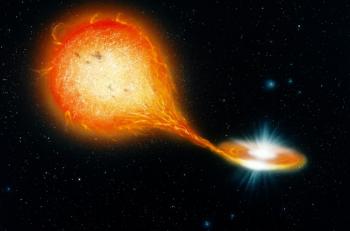 Astronomy Special Seminar: George Becker, Space Telescope Science Institute, "The End of Reionization: An IGM Perspective" January 27, 2015 | 12:00 PM | LASR conference room 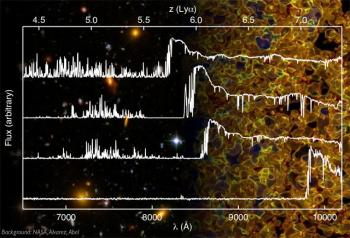 Astronomy Special Seminar: Ryan Foley, University of Illinois, Urbana-Champaign, "Transient Astronomy: Dark Energy, Supernova Physics & Exotica" February 3, 2015 | 12:00 PM | LASR conference room 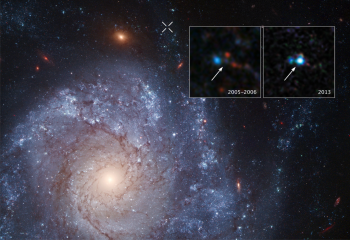 I will discuss recent successes and potential future opportunities in transient astrophysics. These include a factor of 2 improvement in Type Ia supernova distances, a new survey to make the most headway in measuring dark energy, a large on-going Hubble program and the innovative use of light echoes from historical Galactic supernovae to measure the explosion properties of Type Ia supernovae, and a Magellan program to probe Type Ia supernova progenitor environments. I will also briefly discuss the recently identified Type Iax class of supernovae, which are the most common "peculiar" supernovae. I will present observations of the progenitor system of one Type Iax supernova, the first detection of a progenitor system for any thermonuclear supernova. HEP seminar: Kerstin Perez, Haverford, "Antideutron Signatures of Dark Matter with the GAPS Experiment" February 16, 2015 | 4:15 PM | LASR 162 The question of the origin of dark matter, the mysterious matter known to permeate the universe, is one of the towering problems of 21st-century physics. Dozens of dark matter search experiments are currently planned or ongoing, but these efforts have been hampered by the large background rates from conventional astrophysical processes and the vast array of signatures that could indicate a dark matter interaction. The General Antiparticle Spectrometer (GAPS) experiment aims to advance these searches by detecting low-energy antideuterons that result from the self-annihilation of dark matter particles in the Galactic halo, providing an essentially background-free signature of dark matter. This signal probes supersymmetry, extra-dimensional theories, and other modes dark matter production, complementing and extending the reach of current experiments. In this seminar, I will present the design and discovery potential of the baloon-borne GAPS experiment, especially in the context of recent dark matter results. Adler colloquium: Andy Howell, Las Cumbres Global Telescope/UC Santa Barbara, "Understanding Mysterious Sources of Energy in Supernovae" February 19, 2015 | 11:00 AM | Adler Planetarium Website In the past few years new classes of supernovae have been discovered that are both brighter and fainter than previously thought possible. The superluminous supernovae have luminosities 100 times greater than a core-collapse supernova, and their origin is a mystery. I will present data on two of the most distant and best-observed events from the Supernova Legacy Survey, and the first radiative transfer model that gives insight into their origin. They seem to result from the creation and spin-down of a magnetar. I'll also discuss a range of both normal and exotic supernovae from the local universe, including an even newer class of superluminous supernovae, and show how new observations are revealing or limiting SN progenitors for the first time. The Las Cumbres Observatory Global Telescope Network (LCOGT) is one of the latest tools allowing new kinds of observations with its 11 node network of one and two meter robotic telescopes spanning the globe. We have now begun the LCOGT Supernova Key Project, which will collect the largest sample of low-redshift supernovae ever obtained: lightcurves and spectroscopy on 450 supernovae over 3 years for use in cosmology, understanding explosions, and determining supernova progenitors. Read more >> Kavli Prize Lecture: Michael E. Brown, California Institute of Technology, "Tales from the Outer Solar System" March 5, 2015 | 7:30 PM | Adler Planetarium Website Join us on Thursday, March 5, from 7:30 to 9:30 pm for the first Kavli Prize Lecture and Q&A session by 2012 Kavli Prize Laureate in Astrophysics, Michael E. Brown, from the California Institute of Technology. Following the Q&A portion of the lecture guests will have a chance to interact with Michael Brown and Adler astronomers during a reception in the Welcome Gallery. Coffee and refreshments will be served. The past decade has seen an explosion in the discoveries of Pluto-sized and near Pluto-sized bodies in the outer Solar System, giving rise to a new classification of "dwarf planets." Like Pluto, each of these largest dwarf planets has a unique story to tell about the history and evolution of the Solar System. Dr. Brown will discuss the discoveries of these objects and the new views of giant collisions, stellar encounters, and planetary rearrangement that we are gaining from their study. Finally, he will show intriguing new evidence that there is an even larger object lurking far beyond these dwarf planets. This object, if we can find it, will finally silence the lingering questions about Pluto and planethood, for this object, if we can find it, will be the new rightful 9th planet. Michael E. Brown has been a professor of planetary astronomy at the California Institute of Technology (Caltech) since 2003. His team has discovered many trans-Neptunian objects (TNOs), notably the dwarf planet Eris, the only known TNO more massive than Pluto. He has referred to himself as the man who "killed Pluto", because he furthered Pluto being downgraded to a dwarf planet in the aftermath of the discovery of Eris and several other probable trans-Neptunian dwarf planets. He is the author of How I Killed Pluto and Why It Had It Coming, published in 2010. There will be a live domecast of this presentation to the Denver Museum of Nature and Science, the Peoria Riverfront Museum, and the Flandrau Planetarium in Tucson, Arizona. Read more >> COSMOSIS: Opening Reception May 3, 2015 | 2:00 PM | Hyde Park Arts Center Website Join us at HPAC for the COSMOSIS opening reception featuring a performance by Douglas Ewart, DJ sets by John Corbett, and sun-gazing with Sarah + Joseph Belknap. Programming schedule: 2-3:30 John Corbett DJ set 3:30-4 Douglas Ewart performance 4-4:30 John Corbett DJ set Sun-gazing with Sarah + Joseph Belknap throughout the event Read more >> Adler Colloquium: Renee Hlozek, "Current Challenges in CMB Cosmology" May 21, 2015 | 11:00 AM | Adler Planetarium Website CMB cosmology is currently undergoing a data-rich epoch, with measurements on small scales from experiments like the Atacama Cosmology Telescope (ACT) and it polarisation instrument, ACTPol, adding to measurements on larger scales by Planck, WMAP and most recently BICEP. I will contextualise the measurements and present constraints on parameters from the observations at 148 GHz and 217 GHz respectively by ACT from three years of observations. I'll discuss my recent re-analysis of data from the 2013 data release by the Planck satellite, where we found that the 217GHz x 217GHz detector set spectrum used in the Planck analysis is responsible for some of the tension between the Planck parameters and other astronomical measurements. I'll show evidence suggesting residual systematics in the detector set spectra used in the Planck likelihood code, and discuss how the picture has changed with updated Planck data, and put things in context with the BICEP results. I'll highlight the recent ACTPol results, and outline how upcoming information from various cosmological probes will open up the window on the epoch of reionisation; our least explored epoch to date. Read more >> Alumni Weekend: Edward C. Stone, SM'59, PhD'64, "The Voyager Journey to Interstellar Space" June 5, 2015 | 4:00 PM | Stuart Hall, Room 104, 5835 S. Greenwood Ave.  Abigail Crites, Caltech, "The TIME-Pilot CII Intensity Mapping Experiment to Study the Epoch of Reionization" July 13, 2015 | 1:00 PM | LASR conference room 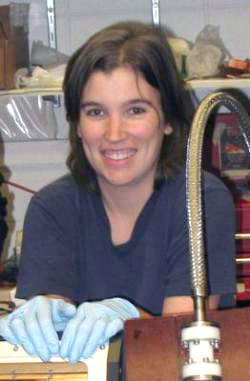 82nd Compton Lectures: Manos Chatzopoulos, "The Cosmic Fireworks that Synthesize the Building Blocks of Life: Supernova Explosions" October 3 - December 12, 2015 | 11:00 AM | Kersten Physics Teaching Center, Room 106 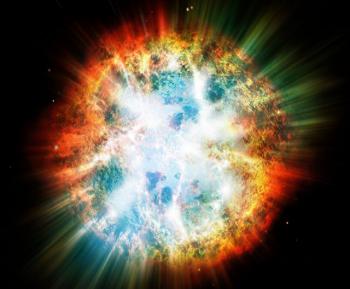 Supernova explosions mark the violent deaths of massive stars and the ignition of ultra-dense cores of stars called white dwarfs. The luminosity produced by these cosmic catastrophes is millions to hundreds of billions times greater than that of the sun, meaning that they can outshine their entire host galaxy. The massive stars that evolve into supernova explosions synthesize heavy nuclei that are some of the main ingredients of life. The immense intrinsic brightness of these events allows us to discover them at great distances and use some of them as "standard candles" to measure large cosmic scales enabling us to explore some of the most fundamental properties of the Universe. Supernovae are observed to be a very diverse group of astrophysical objects with many ranges in luminosities, durations and chemical composition. The onset of modern fully-automated wide field telescopes and the large number of amateur astronomers searching for them has allowed us to better understand their nature and explosion mechanism. Furthermore, realistic three-dimensional supernova simulations run on supercomputers have given us a unique insight on the physics associated with the explosion mechanism. Each week we will explore the conditions that lead to supernova explosions by first understanding the evolution of massive stars, the variety of mechanisms proposed for the explosion itself, and the associated numerical supercomputer simulations largely performed by the astrophysicists here at the University of Chicago. No scientific background is required -- just bring your curiosity. More Than a Physicist - A 70th Birthday Symposium in Honor of Don Lamb October 17, 2015 | 8:30 AM | Chicago, IL Website The Department of Astronomy & Astrophysics and the Harris School of Public Policy Studies at the University of Chicago are holding a symposium and dinner in honor of Don Lamb's 70th birthday, entitled "More Than A Physicist."
You are cordially invited to the symposium and a dinner afterward. Keynote After Dinner Speaker: "A Physicist Goes to Washington" The Honorable G. William ("Bill") Foster, Former Businessman; Former Physicist, Fermi National Accelerator Laboratory; and U. S. Representative for the 11th Congressional District of Illinois Read more >> Related Links: KICP Members: Donald Q. Lamb Jim Hartle, University of California, Santa Barbara, "The Quantum Origin of Our Classical Universe" October 23, 2015 | 3:00 PM | ACC 211 A striking feature of our indeterministic quantum universe is the wide range of time, place, and scale on which the deterministic laws of classical physics hold. This talk will describe the origin of this quasiclassical realm in a quantum cosmology based on Hawking's no-boundary quantum state of the universe. Classical spacetime is the key to the quasiclassical realm, and the no-boundary probabilities for different classical spacetimes lead to different predictions for cosmological observations today. In a simple model, these probabilities favor a long period of inflation, small fluctuations such as those seen in the CMB, but significant fluctuations away from homogeneity on very large scales. Probabilities will also be discussed for properties of the early universe such as whether it was singular or bounced at a small radius, and the direction of the arrow of time. Higgs Effective Field Theories (HEFT 2015) November 4 - 6, 2015 | Chicago, IL 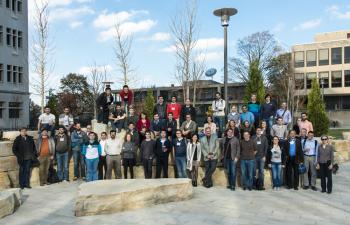 The aim of the workshop is to bring together experts working in the areas of Effective Field Theory techniques in Higgs and BSM physics. We hope that this meeting will foster stimulating discussions and exchange of ideas on the topic. To further expand the horizons of these discussions, we plan on having some talks by key experimental colleagues as well. Physics colloquium: Wendy Freedman, University of Chicago, "Measurement of Cosmological Parameters" November 5, 2015 | 4:00 PM | KPTC 106 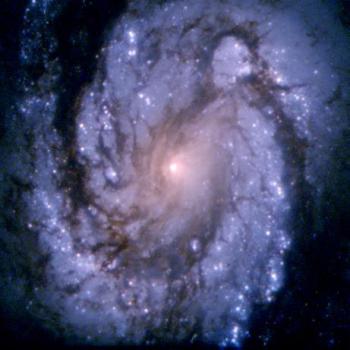 Midwest Cosmic Visions Meeting November 10, 2015 | 8:00 AM | Fermilab, Wilson Hall Website Dear Colleague, We would like to announce the Midwest Cosmic Visions one day workshop to be held at Fermi National Accelerator Laboratory on Tuesday November 10th. This meeting is in response to a call from The Office of High Energy Physics of the US Department of Energy to propose ideas for cosmic projects that will follow after DESI and LSST. The HEP office of DOE has set up a group to study the scientific reach of future cosmic surveys. The group will collect and coordinate ideas from the HEP community for research activities, experiments, projects or facilities that will complement, build on, and extend beyond the current program planned for the 2020s in the 2014 P5 report (DESI, LSST, CMB-S4) in investigating the physics probed by surveys. The group was charged to produce a white paper in January 2016 that will include diverse ideas for the future relevant to the HEP program, ranging from blue sky methods to new project concepts to further use of facilities. With this charge in mind, the Midwest Cosmic Visions workshop will be a one day meeting with three sessions: 1) Enhancing the output from DESI/LSST 2) Science projects beyond DESI/LSST 3) Instrumentation and R&D geared to these science goals. In addition to this Fall meeting there will be a larger, community-wide workshop in Spring/Summer 2016. Sincerely, Elise Jennings, Chair of the Organizing Committee Scott Dodelson Nick Gnedin Katrin Heitmann Klaus Honscheid Albert Stebbins Read more >> Related Links: KICP Members: Scott Dodelson; Nickolay Y. Gnedin; Katrin Heitmann; Elise Jennings Physics with a Bang! December 5, 2015 | 11:00 AM | Kersten Physics Teaching Center 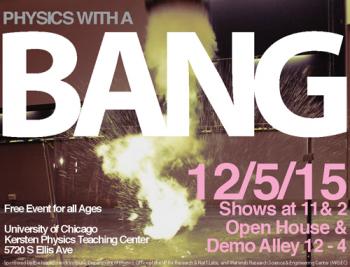 |


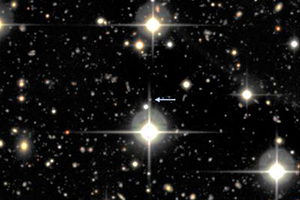
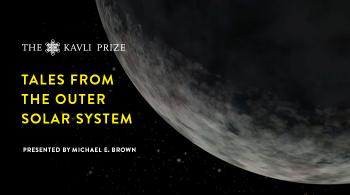
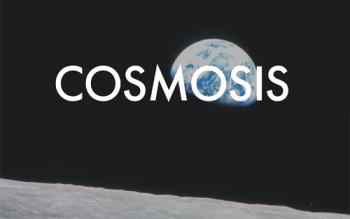
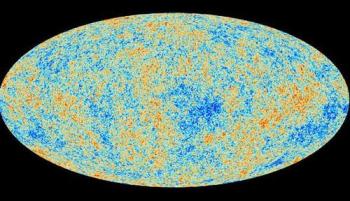

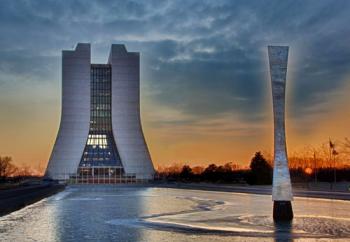



 Overview
Overview